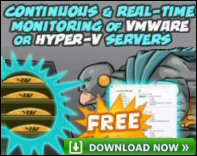Introduction to Exchange 2003 Disaster Recovery
Compared with previous versions, Exchange 2003 brings big improvements to disaster recovery. My advice is to actively seek out new features; for example, the Mailbox Recover Center and Recovery Storage Group.
Topics for Exchange 2003 Disaster Recovery Planning
♠
Restoring Exchange Mailboxes and Email
When users complain that they have lost their email, Exchange 2003 supplies 4 techniques to retrieve that data. Deleted Item Recovery and the Mailbox Recovery Center will enable you to retrieve email without resorting to backup tapes. When you do need to restore from backup then, try the new Recovery Storage Group feature. Save the Alternative Forest with its .pst files as a last resort for disaster recovery.
- Deleted Item Recovery – Set up the mailstores on the Exchange 2003 server, then Outlook clients can retrieve their lost email.
- Mailbox Recover Center – Reconnect deleted mailboxes.
- Recovery Storage Group – Re-unite an existing user with their old mailbox.
- Alternative Forest – Recover to a machine in a different Forest. (Last resort).
Exchange 2003 Restore
Research from companies such as Forrester, show that 35% of all backup tapes do not contain what people expect. This is a horrifying statistic. The only sure way to check that you have a reliable disaster recovery plan is to test a full restore. Of all the Microsoft products to restore, Exchange 2003 is the most complex; there are just so many factors and so much dependency.
See more on Recovery Options See more on Restore Planning
Exchange 2003 Backup
I have broken with tradition and described restore before backup – this was deliberate. The reason was that I wanted to emphasise that restore should dictate to backup and not the other way around. However, I admit that without a good backup, there can be no restore.
- The important new backup feature in Exchange 2003 is Volume Shadow Copy.
- To plan a successful disaster recovery strategy, take the time to investigate how the mail databases, transaction logs and checkpoint files interact. See more on Backup Planning here
- Exchange 2003 supports 3 main backup methods. See more on Backup Methods here
- Assess all areas for risks and make sure that your plan has no obvious weak links.
Guy Recommends: SolarWinds Free Wake-On-LAN Utility
Encouraging computers to sleep when they’re not in use is a great idea – until you are away from your desk and need a file on that remote sleeping machine!
WOL also has business uses for example, rousing machines so that they can have update patches applied. My real reason for recommending you download this free tool is because it’s so much fun sending those ‘Magic Packets’. Give WOL a try – it’s free.
Download your free copy of SolarWinds Wake-On-LAN
Disaster Horror Stories
Learn from other peoples mistakes. Remember Murphy’s first law, what ever can go wrong, will go wrong. I have tales of unlucky or unfortunate Exchange calamities. See disaster horror stories.
Crash Cart
On a positive note, take the time to fill a trolley with all the hardware and software that you will need to recover an Exchange 2003 server. More ideas for a crash cart.
Guy Recommends: SolarWinds Free Wake-On-LAN Utility
Encouraging computers to sleep when they’re not in use is a great idea – until you are away from your desk and need a file on that remote sleeping machine!
WOL also has business uses for example, rousing machines so that they can have update patches applied. My real reason for recommending you download this free tool is because it’s so much fun sending those ‘Magic Packets’. Give WOL a try – it’s free.
Download your free copy of SolarWinds Wake-On-LAN
Circular Logging
Avoid circular logging. Circular logging is only for low disk situations. If you enable circular logging you severely restrict your ability to restore Exchange databases. See more here
Guy Recommends : SolarWinds’ Free VM Monitor
The best feature of this new this new version of SolarWinds VM Monitor is that it checks Windows Hyper-V. Naturally, it still works with virtual machines on VMware ESX Servers. VM Monitor is a clever desktop tool that not only tests that your server is online, but also displays the CPU and memory utilization for each node.
It’s easy to install and to configure this virtual machine monitor, all you need the host server’s IP address or hostname and the logon info. Give this virtual machine monitor a try – it’s free.
Download your free copy of SolarWinds VM Monitor.
Exchange 2003 Disaster Recovery – Summary
Begin your disaster recovery at the Exchange System Manager. First, try to recover your email using either the Deleted Item Recovery, or the Mailbox Recovery Center. Only if those strategies fail, would you need to load up the backup tapes and restore the mailboxes.
When it comes to disaster recovery, prevention is always so much better than cure. As you read through my different strategies, make a list of proactive techniques. Here are more disaster recovery tips.
See Also
- Mailbox Recovery
- Recovery Storage Group
- Alternative Forest Recovery
- Deleted Item Recovery
- Backup
- Restore
- Restore Horror Stories
- Restore. env
- Diagnostic Logging
- SMTP Logging
- Free Kiwi Syslog Analyzer
- Eseutil
- Tips for Disaster Recovery

